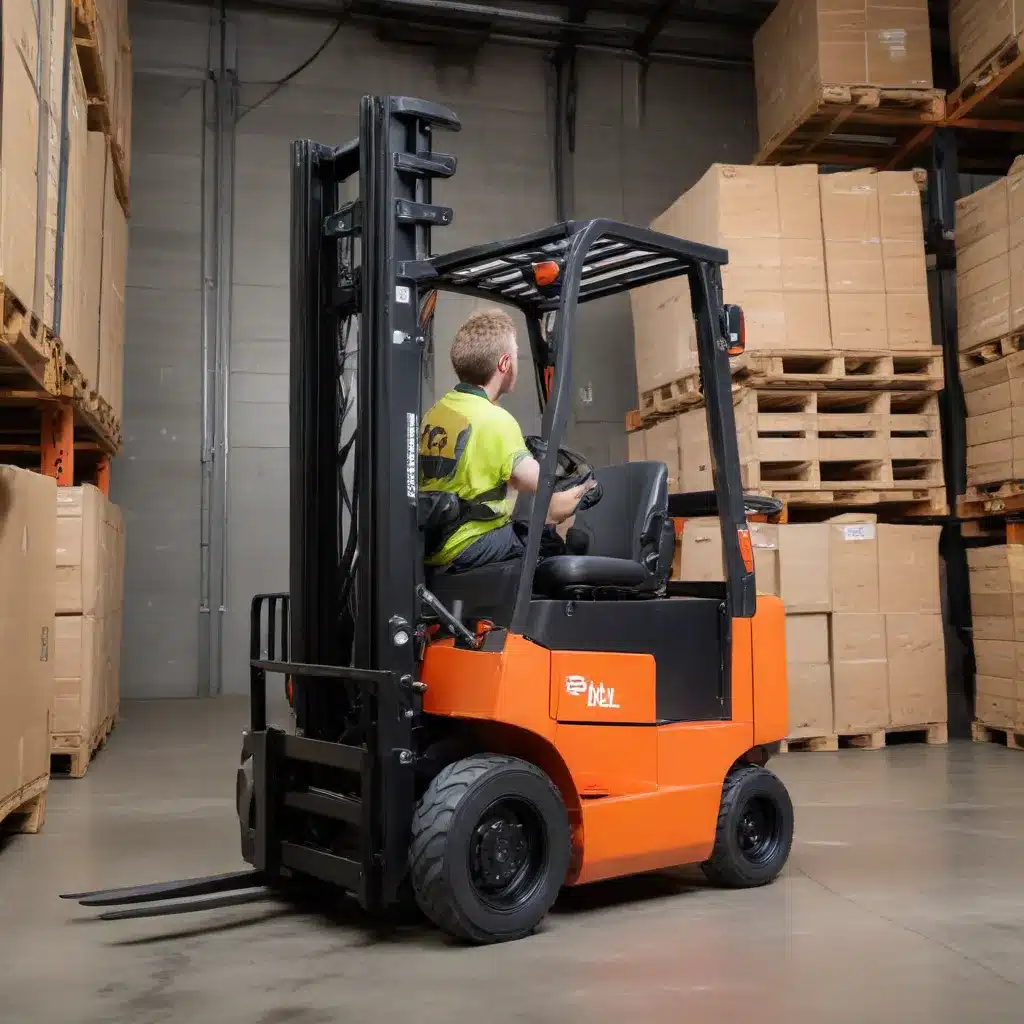
As a seasoned industry expert in forklifts, warehousing, and logistics, I’ve witnessed firsthand the importance of operator comfort and control in driving productivity and safety within material handling operations. In this comprehensive article, we’ll explore the transformative impact of forklift attachments designed to enhance ergonomics, improve job satisfaction, and unlock the full potential of your workforce.
The Ergonomic Imperative: Prioritizing Operator Well-being
In the fast-paced world of warehousing and logistics, forklift operators are the backbone of efficient operations. These individuals spend countless hours maneuvering heavy machinery, navigating tight spaces, and handling delicate loads. However, the physical demands of the job can take a toll, leading to fatigue, musculoskeletal disorders, and reduced productivity.
Recognizing the pivotal role of operator comfort, industry leaders like TCM and Konecranes have made significant strides in designing forklift attachments that prioritize ergonomics and operator well-being. These innovative solutions aim to reduce the physical strain associated with forklift operation, enabling operators to work more comfortably and efficiently throughout their shifts.
Innovative Forklift Attachments for Improved Ergonomics
Floating Armrests and Mini Steering Wheels
One of the most common challenges faced by forklift operators is the strain on their upper body, particularly the neck, shoulders, and elbows. Repetitive movements, such as constant steering and adjusting of the forks, can lead to discomfort and fatigue. Manufacturers like TCM have addressed this issue by incorporating floating armrests and mini steering wheels into their forklift designs.
These ergonomic features allow operators to maintain a relaxed body position, reducing the pressure on their joints and muscles. The floating armrest, combined with the compact steering wheel, promotes a more natural hand position, minimizing the strain on the operator’s shoulder and elbow. This, in turn, helps to improve posture and reduce the risk of repetitive strain injuries.
Tilting Seats and Adjustable Backrests
Another key factor in operator comfort is the forklift seat. As the primary point of contact between the operator and the machine, the seat plays a crucial role in reducing back and neck strain. Manufacturers have responded by incorporating advanced seating solutions, such as tilting seats and adjustable backrests.
TCM’s reach trucks, for example, feature a state-of-the-art seat with an 18-degree tilt function, allowing operators to adapt their position based on the load height and working environment. This helps to alleviate neck and back strain, especially when handling loads at higher levels. Additionally, the tilting backrest can be adjusted to the weight of the operator, providing personalized support and maximizing comfort during long shifts.
Mast Tilt Control and Stability Support Systems
Navigating forklift masts and load positioning can also contribute to operator fatigue and strain. Manufacturers have developed innovative attachments to address these challenges, such as Mast Tilt Control (MTC) and Stability Support Systems.
MTC technology, as seen in TCM’s reach trucks, enables intuitive and simultaneous operation of the forklift controls, ensuring excellent mast stability for quick and safe pallet handling. This helps to reduce the physical effort required from the operator, contributing to improved stacking performance and overall safety.
Moreover, Stability Support Systems, like the one featured in TCM’s reach trucks, help operators maintain driving stability in various situations and environments. By adapting the mast tilt, reach, and sideshift speed, these systems enhance the forklift’s stability, boosting the operator’s confidence and performance.
Operator Assistance Systems and Visibility Enhancements
Forklift operation can be mentally taxing, with operators constantly needing to navigate tight spaces, monitor load stability, and be aware of their surroundings. Manufacturers have developed a range of operator assistance systems and visibility enhancements to alleviate these cognitive demands.
Konecranes, for instance, has integrated automatic load-sway control into their lift trucks and reach stackers. This feature minimizes load swinging during lifting and positioning, enabling operators to handle loads more efficiently and with greater precision. By reducing the mental strain associated with load management, operators can maintain focus and productivity throughout their shifts.
Additionally, Konecranes’ equipment boasts advanced visibility features, such as large windows, strategically placed mirrors, and camera systems. These enhancements provide operators with a comprehensive view of their surroundings, allowing them to navigate confidently, accurately position loads, and avoid potential hazards. Improved visibility not only enhances safety but also contributes to increased productivity and job satisfaction.
Unlocking Operator Productivity and Job Satisfaction
The benefits of ergonomic forklift attachments extend far beyond operator comfort. By prioritizing the well-being and efficiency of forklift operators, these innovative solutions have a direct impact on productivity, job satisfaction, and the overall success of material handling operations.
When operators are comfortable and able to work efficiently, they are less prone to fatigue, musculoskeletal issues, and distractions. This, in turn, leads to improved focus, increased productivity, and reduced downtime. Satisfied operators are more engaged, take pride in their work, and are less likely to experience burnout or seek employment elsewhere.
Moreover, the long-term cost savings associated with these ergonomic enhancements are significant. By reducing operator-related injuries and associated medical expenses, as well as minimizing equipment damage and maintenance costs, businesses can optimize their total cost of ownership and enjoy a more sustainable, profitable operation.
Conclusion: Embracing the Ergonomic Advantage
In the dynamic world of material handling, the importance of forklift operator comfort and control cannot be overstated. By investing in innovative forklift attachments designed to enhance ergonomics, organizations can unlock a wealth of benefits, from improved productivity and safety to enhanced job satisfaction and long-term cost savings.
As you evaluate your forklift fleet and consider upgrades or replacements, I encourage you to prioritize ergonomic features that prioritize the well-being of your operators. Visit Forklift Reviews to explore the latest advancements in forklift technology and discover how ergonomic enhancements can transform your material handling operations.
Remember, when your operators are comfortable, confident, and empowered, your business thrives. Embrace the ergonomic advantage and unlock the full potential of your forklift fleet.

